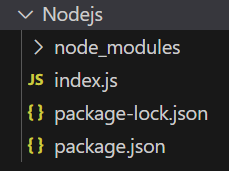Express req.params Property
Last Updated :
01 Jan, 2024
The req.params property is an object containing properties mapped to the named route “parameters”. For example, if you have the route /student/:id, then the “id” property is available as req.params.id. This object defaults to {}.
Syntax:
req.params
Parameter: No parameters.
Return Value: Object
Steps to Install the express module:
Step 1: You can install this package by using this command.
npm install express
Step 2: After installing the express module, you can check your express version in the command prompt using the command.
npm version express
Step 3: After that, you can just create a folder and add a file, for example, index.js. To run this file you need to run the following command.
node index.js
Project Structure:

Project Structure
The updated dependencies in package.json file will look like:
"dependencies": {
"express": "^4.18.2",
}
Example 1: Below is the code of req.params Property implementation.
javascript
const express = require('express');
const app = express();
const PORT = 3000;
app.get('/:id', function (req, res) {
console.log(req.params['id']);
res.send();
});
app.listen(PORT, function (err) {
if (err) console.log(err);
console.log("Server listening on PORT", PORT);
});
|
Steps to run the program:
Make sure you have installed the express module using the following command:
npm install express
Run the index.js file using the below command:
node index.js
Console Output:
Server listening on PORT 3000
Browser Output: Now open your browser and go to http://localhost:3000/123, now you can see the following output on your console:
Server listening on PORT 3000
123
Example 2: Below is the code of req.params Property implementation.
javascript
const express = require('express');
const e = require('express');
const app = express();
const PORT = 3000;
const student = express.Router();
app.use('/student', student);
student.get('/profile/:start/:end', function (req, res) {
console.log("Starting Page: ", req.params['start']);
console.log("Ending Page: ", req.params['end']);
res.send();
})
app.listen(PORT, function (err) {
if (err) console.log(err);
console.log("Server listening on PORT", PORT);
});
|
Steps to run the program: Run the index.js file using the below command:
node index.js
Output: make a GET request to http://localhost:3000/student/profile/12/17, now you can see the following output on your console:
Server listening on PORT 3000
Starting Page: 12
Ending Page: 17
Like Article
Suggest improvement
Share your thoughts in the comments
Please Login to comment...